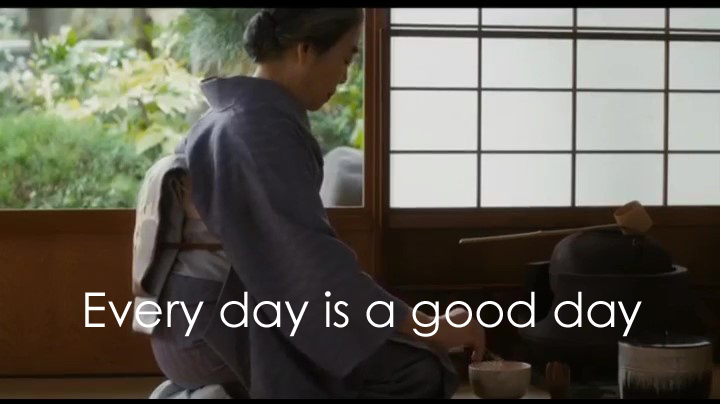
Nichinichi kore kojitsu
日々是好日
Every Day - A Good Day

Movie Data
Title: Every Day - A Good Day
Original title: 日々是好日 Nichinichi kore kojitsu
Published: 2018
Length: 101 min
Staff
Director: Tatsushi Omori
Script: Tatsushi Omori, Noriko Morishita
Music: Seibu Hiroku
Cast
Kirin Kiki: Takeda Sensei
Haru Kuroki: Noriko
Mikako Tabe: Michiko
Plot
Every Day a Good Day is about how a young woman’s induction and immersion into the meditative Japanese tea ceremony helped her scale obstacles in her life across two decades.
Adapting essays by Noriko Morishita — who, according to the production notes, personal supervised the filming of the rituals, the actors’ gestures and the exquisite cakes shown onscreen — director Tatsushi Omori has in turn emerged from his long-running, violence-drenched metier to deliver a graceful, elegiac and ceaselessly beautiful rite-of-passage drama. Every Day a Good Day should travel on both its own merit but also as a memorial for Kiki.
One of Omori’s best moves here is to cast Haru Kuroki as his protagonist. Here, she plays Noriko, who begins the film about to graduate from university. Considered by her parents as too dull and unfocused — “a klutz,” as she herself says in a voiceover — she hesitantly agrees to study chado, the traditional Japanese practice that is seen partly as preparation of tea and partly as an intense performance art.
Joined by her more confident (and prettier) cousin Michiko (Mikako Tabe), Noriko — who initially favors learning flamenco or Italian rather than studying something she considers dated and boring — begins classes with Takeda (Kiki). Cue 15 minutes of the master’s meticulous instructions about the proper way of conducting the ceremony; the first of them, the proper folding of a napkin, is a 20-step process. But these scenes are essential: More than being accurate of and reverent to the tradition, they showcase Kiki’s craft — she’s so natural, she appears to be really a tea ceremony sensei herself — and also excuses the director of having to disrupt the rhythm of his story so as to prove his authenticity to the art.